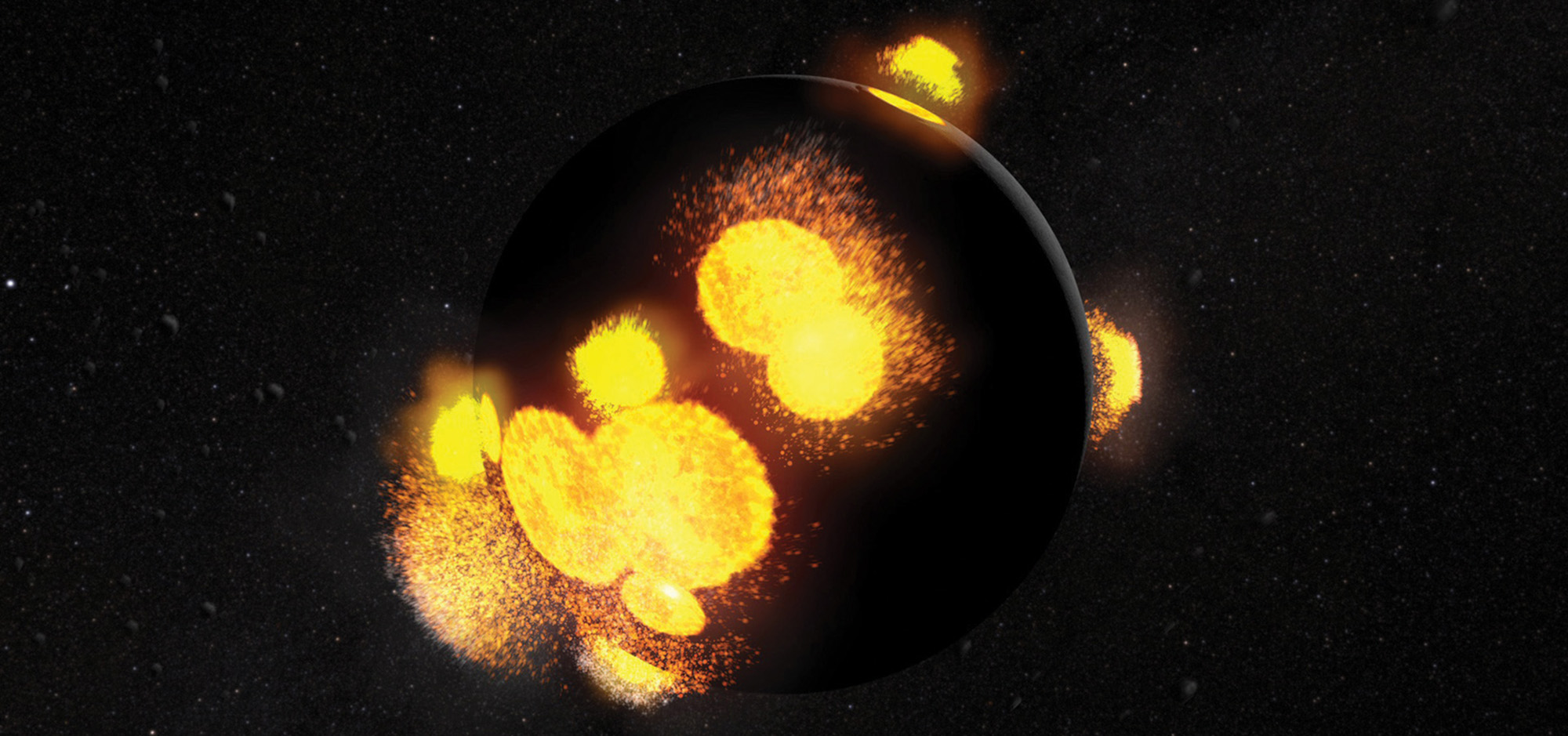
A new study sheds light on the moon’s age and origin story.
Even though humans have pondered the moon since the first of us looked skyward, there is still much we don’t know about it.
One of these unsolved questions is its origin story. We think the moon formed after a collision between Earth and another huge object created debris made of molten magma. But we don’t know exactly when—or how.
Now scientists have made new measurements of moon rocks retrieved during the Apollo missions to determine both when the moon first formed from the debris and when it later solidified into the rocky orb we see today.
The study, conducted by a collaboration including University of Chicago scientists, applied cutting-edge techniques to make ultraprecise readings of rare minerals in the rocks. Published in the Proceedings of the National Academy of Sciences in January, the results add evidence for our understanding of the formation stories of both the moon and Earth.
“It took us years to develop these techniques, but we got a very precise answer for a question that has been controversial for a long time,” says Nicolas Dauphas, Louis Block Professor of Geophysical Sciences, the first author on the paper and head of the UChicago Origins Laboratory.
We know the solar system formed about 4.57 billion years ago. Shortly afterward, as it cooled, debris began colliding and clumping together over time, forming the planets. Scientists believe that a very large object crashed into the burgeoning Earth and that our moon formed from the debris produced by this impact.
This collision was extremely violent, Dauphas says, enough to melt rocks; “so at first we must imagine a big ball of magma floating in space around Earth.”
The moon quickly began to cool. Most of the lunar magma ocean solidified almost right away, by geologic standards—in about a single millennium.
But once about 80 percent of the magma had solidified, a crust of minerals formed, which insulated the young moon. “It’s like putting on a coat in Chicago when it’s cold out—you will not lose heat as fast,” says Dauphas. That slowed down the cooling process, and for a time the moon had a partially molten mantle. What researchers haven’t been able to pin down is how long it stayed that way before it cooled all the way down and became solid rock.
Past studies of samples from the Apollo missions revealed that as the moon slowly cooled, a mixture of certain elements would have floated upward in the partly molten mantle—a bit like the flaky white salt left behind when seawater evaporates—and formed a distinct layer.
Previous researchers figured that if they could find a precise age for this magma layer, they would know when the moon was 99 percent crystallized. But they didn’t know exactly how to go about finding that precise age.
Dauphas and his collaborators decided to look at the different proportions of elements locked inside the moon rocks retrieved by Apollo astronauts. In particular, they focused on KREEP, a lunar material named for its high levels of potassium (K on the periodic table), rare earth elements, and phosphorous (P on the periodic table).
One of the rare earth elements in KREEP is lutetium, which is very slightly radioactive; over eons, it gradually changes into the element hafnium at a predictable rate. So scientists can work backward to see how long a particular rock has been around. (This is similar to the way we use carbon dating to tell how old archaeological artifacts are.)
In the early solar system, all the rocks had the same amount of lutetium. But the solidification process that formed KREEP did not favor the element, so that layer has lower levels of lutetium than other rocks from the same era.
If the scientists could very precisely measure the proportions of lutetium and hafnium in moon rocks compared to other objects from the same era that originated elsewhere in the solar system, like meteorites, they could calculate backward to see when the KREEP layer formed—and thus when the moon was just about done cooling.
The trouble is, we only have small, precious samples of moon rocks. So the team, including Cindy Xi Chen, PhD’22, had to develop extremely rigorous techniques to separate the different elements.
By testing tiny samples of moon rocks retrieved from multiple Apollo missions, they came up with an age for the solidification of the moon: 4.43 billion years before the present day.
Based on other studies, scientists think the solidification process would have taken about 20 million years. Working backward, that puts the formation of the moon itself at about 4.45 billion years ago.
This tells us not only about the history of the moon but also about the formation of Earth, since the impact that birthed the moon was probably also the last major impact to Earth—marking the date when our planet may have first become stable and thus hospitable for life.
“This finding aligns nicely with other evidence,” says Dauphas. “It’s a great place to be in as we prepare for more knowledge about the moon from the Chang-e and Artemis missions”—two upcoming lunar expeditions by China and the United States, respectively.
Dauphas dedicated the study to the memory of his wife and fellow geochemist Reika Yokochi, a research professor at UChicago who died in 2024 (see Deaths). “She was instrumental to all aspects of my research,” he says.
